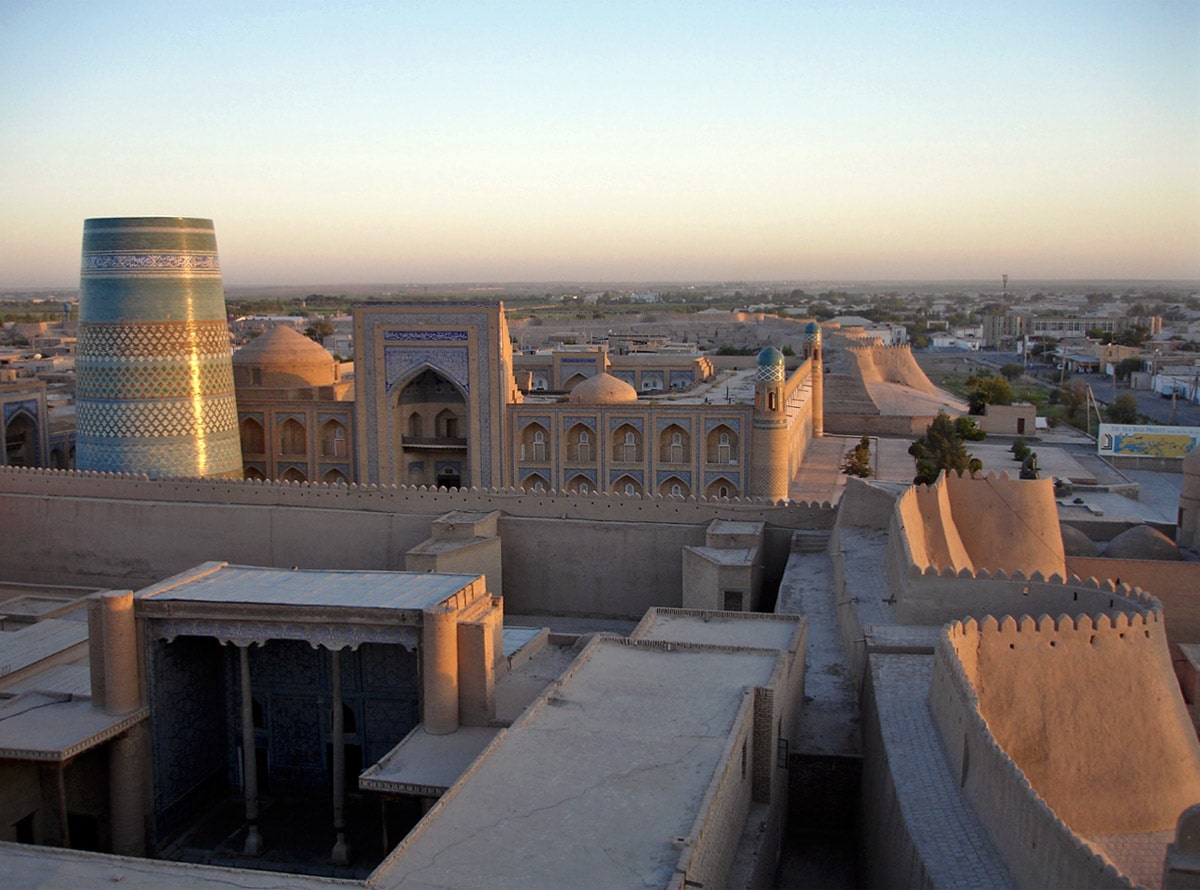World 🢖 Asia 🢖 Uzbekistan
Islamic shrines 🢔 Religious architecture 🢔 Architectural wonders 🢔 Categories of wonders
Wonder
Kalta Minor, Khiva
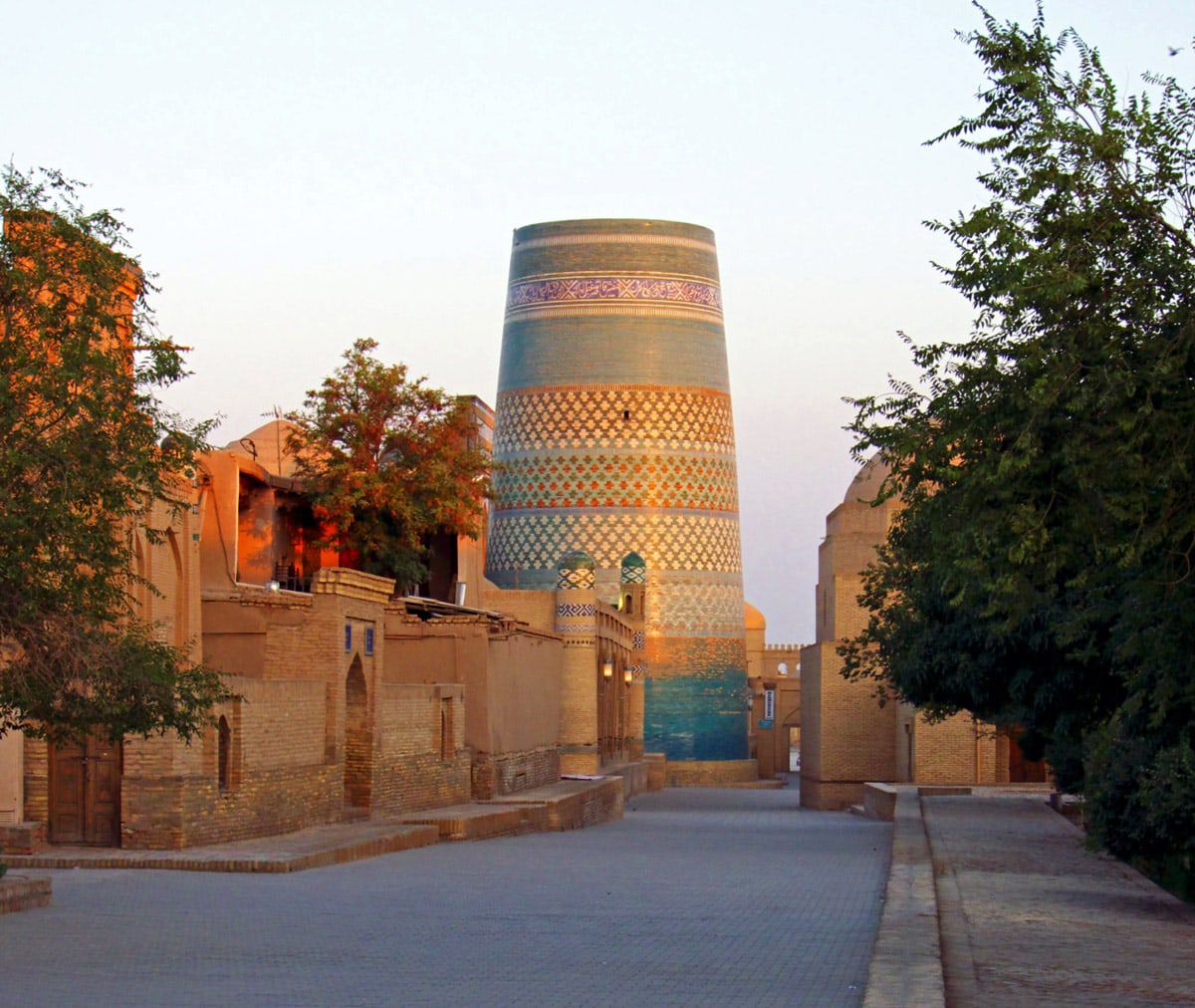
 In short
In short
One of the last great buildings in the great Khanate of Khiva was Kalta Minor. This had to be the tallest structure in Khiva and even in the whole Central Asia. Works ended abruptly in 1855, leaving this beautiful minaret unfinished.
 42.8%
42.8%
GPS coordinates
Location, address
Name in Uzbek
Construction time
Religion
UNESCO World Heritage status
Map of the site
If you see this after your page is loaded completely, leafletJS files are missing.
 In detail
In detail
Khiva
For two millennia at least Khiva has been an important oasis at the rim of Karakum Desert. This was the last place to rest before the crossing of Karakum desert on the way to Persia.
In the 16th century Khiva became the main city of Khwarezm – a large, comparatively fertile area between the deserts of Central Asia.
The historical heritage of Khiva has been well preserved. The historical citadel of Khiva – Itchan Kala – is especially interesting. It is still encircled with medieval city walls. Inside these walls, which enclose an area of 26 ha, are several hundreds of historical buildings.
Kalta Minor – symbol of Khiva
The best known of these structures is Kalta Minor – unusual, massive stump which is somewhat similar to a giant barrel. But "barrel" here is a crude word – Kalta Minor is gorgeous and sophisticated structure.
This tower is 29 m tall and its diameter at the base is 14.5 m.
Kalta Minor was a project of Mohammad Amin Khan – ruler of Khwarezm. According to stories, he wanted to build a minaret so high he could see all the way to Bukhara.
Initially it was planned that minaret would be 70 – 80 m tall, some think that even 110 m. This would make it the tallest structure in Central Asia at its time.
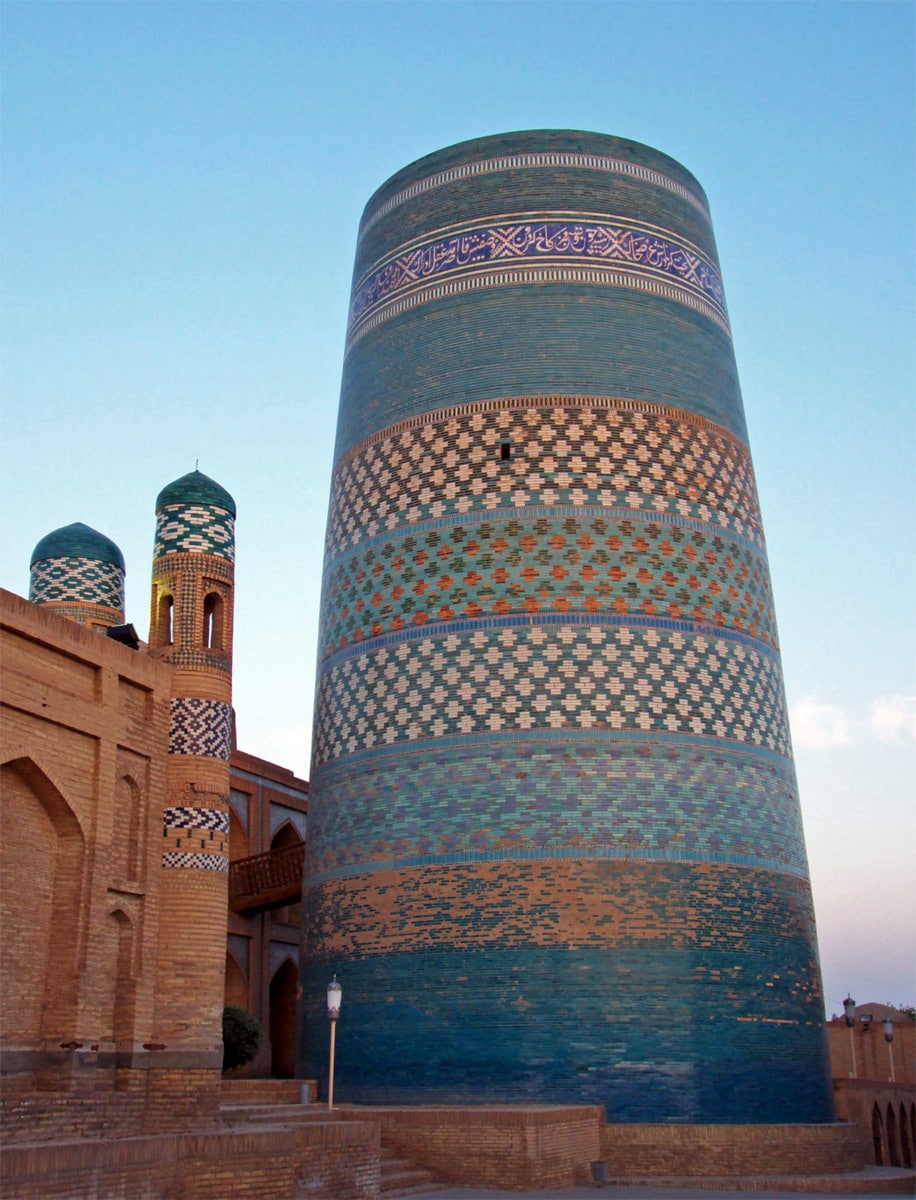
Works were started in 1852. Three years later Mohammad Amin Khan was killed during the fight with Turkmens in Serakh. His death ended also his ambitious project – the construction of minaret ended in 1855.
Thus the unfinished Kalta Minor stands. For locals it definitely looked odd, but gradually everyone used to it and now it is symbol of this amazing city.
Amazing blue glaze
Kalta Minor is the only minaret that is fully covered with glazed tiles. These tiles form intricate, diverse ornaments and are in several colors. The dominating colors though are different shades of blue – blue-green.
This blue color is the most common color of the ornamentation in numerous historical buildings of Central Asian countries, especially in Uzbekistan.
There are several explanations for the popularity of this color, but the basic one is: this is the traditional color of Turkic people, a part of their identity since the times of Timur or even earlier. According to beliefs this color wards off the evil eye. The color of lucid water also symbolizes the wealth in Central Asia.
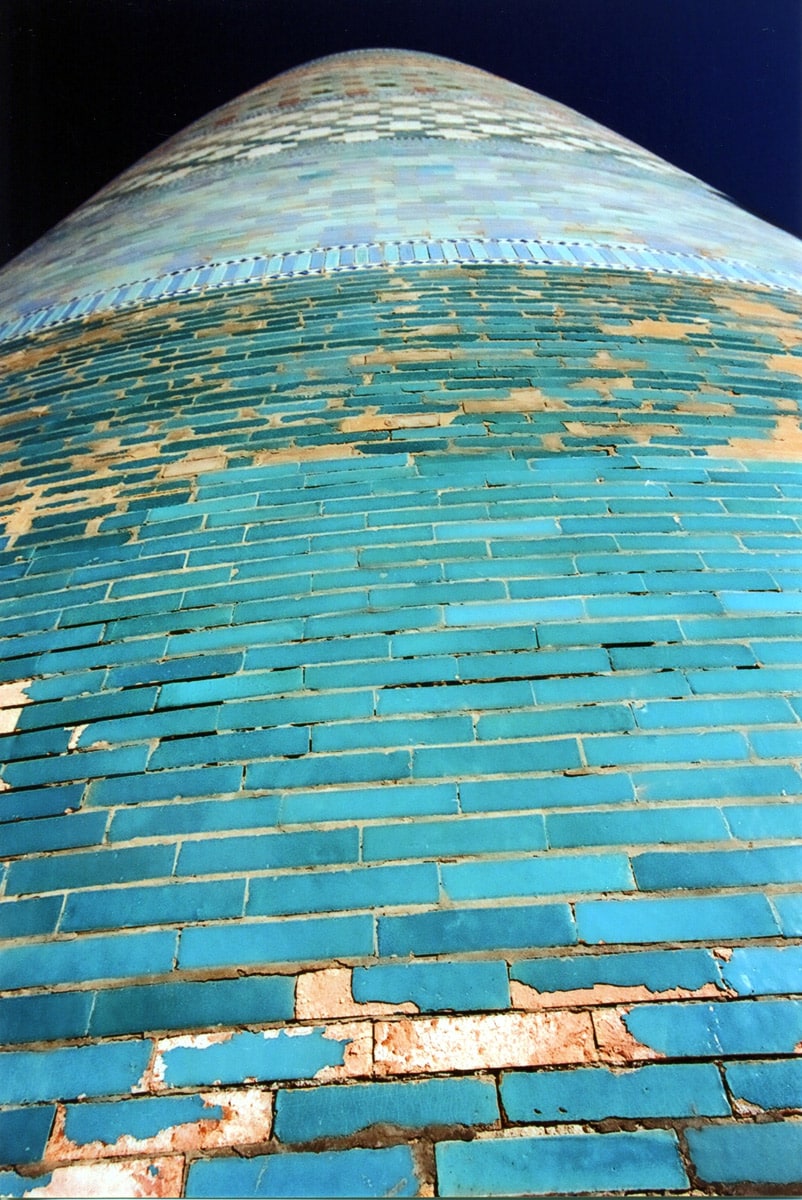
Permanent, long-lasting, and deep blue glaze is a great achievement of local craftsmen. According to local stories, this started with Timur in the 14th century: he wanted to see a locally produced imitation of the beautiful Chinese porcelain, which uses cobalt salts.
Locals managed to find the replacement – so-called ishkor glaze, at least as good as the Chinese glaze if not better. The recipe for making this glaze is not openly disclosed – exact recipes of these dyes are family secrets for many generations and it seems that nowadays part of this knowledge is lost.
It is known that there is used ash of several local plants, including Salsola soda. These plants should be collected in late September. Also, specific salts found in local mountains are used – chemical analysis shows that blue glaze in different Uzbek medieval cities contains cobalt, just like in the case of Chinese glaze. Pebbles of clean quartz also are used. But the chemical composition is just part of the recipe – it is known that the whole process for the production of high-quality glaze is a very complex process.
Unfortunately much knowledge is lost today. Rather often the contemporary replacement to ancient tiles looks out of place.
 Linked articles
Linked articles
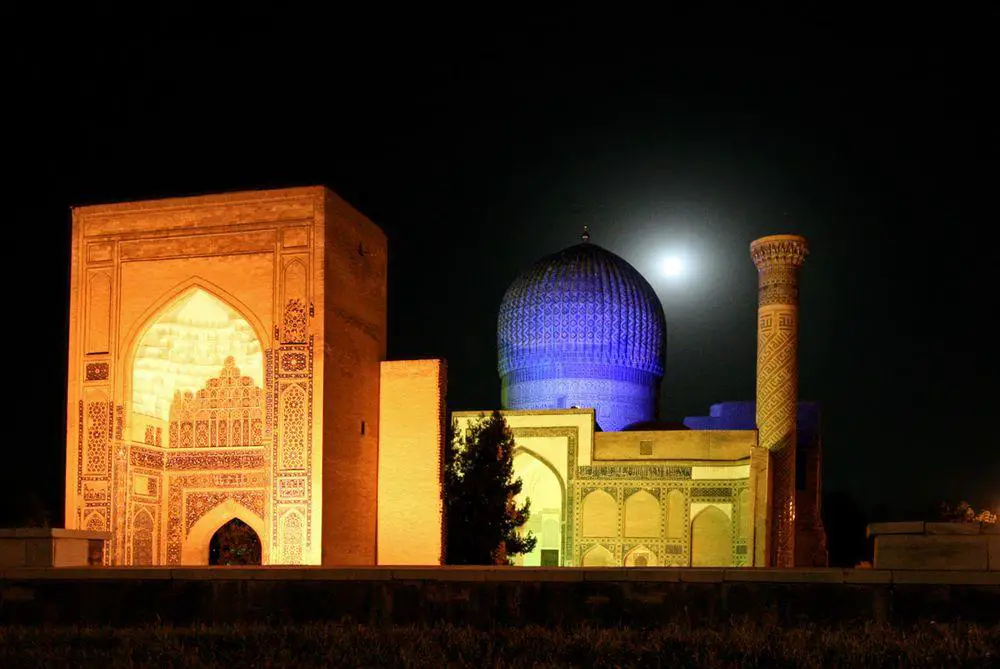
Wonders of Uzbekistan
Uzbekistan is a comparatively dry, mostly desert-covered land very far from any sea… and this is one of the reasons why this country has such an amazing cultural heritage!
For millennia Uzbekistan has been crossed by trade routes uniting prehistoric, ancient, and medieval cultures of Eurasia. For a shorter route caravans had to cross inhospitable deserts and no one could afford to miss the oases in Uzbekistan. Here, at the crossroads of diverse cultures and wealth developed rich and sophisticated cities, such as the glorious Samarkand, Bukhara, and Khiva.
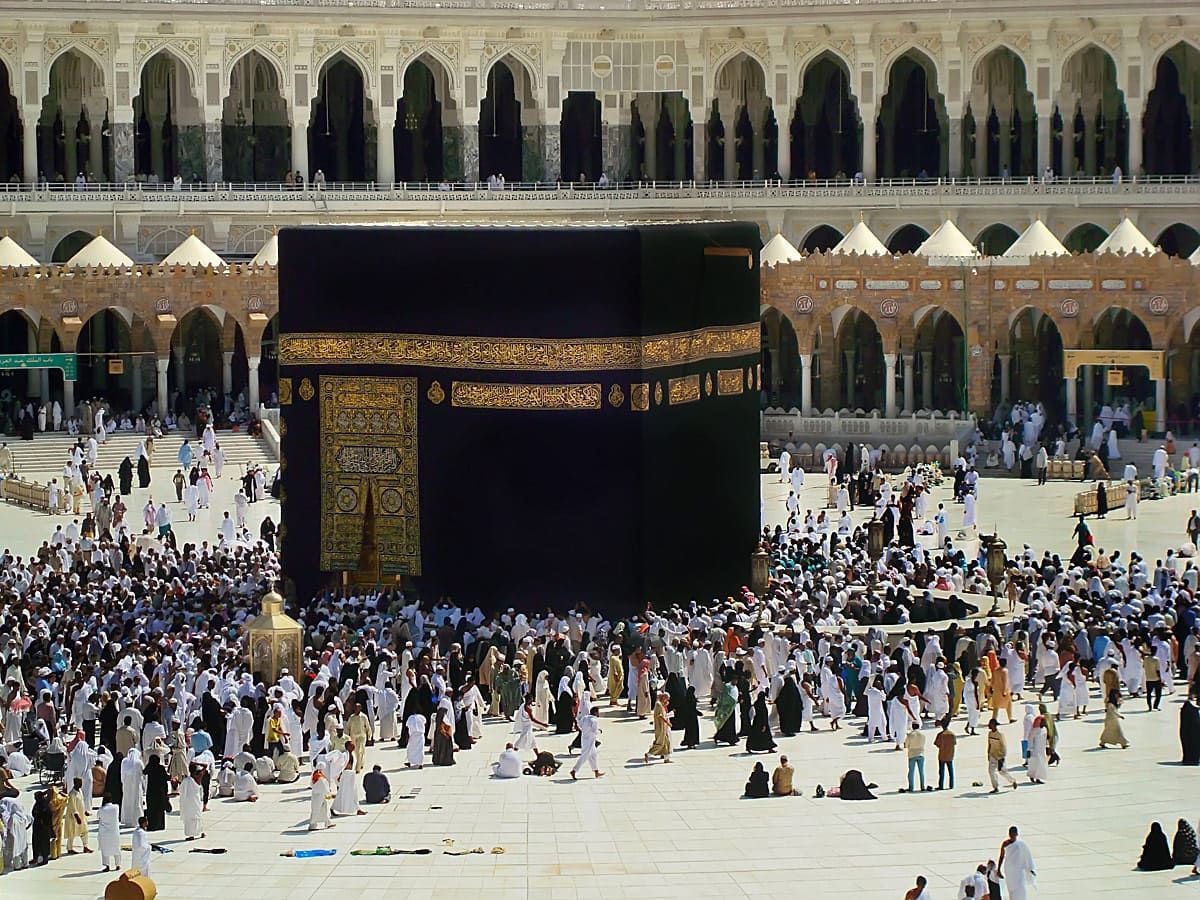
Islamic shrines
Place for worship in Islam is called a mosque. Mosques serve also for education, news exchange, and dispute settlement.
Initially, in the 7th century mosques were unpretentious, large halls for gatherings. Over time, as Islam was spreading, there developed diverse, locally adapted architectural forms of mosques.
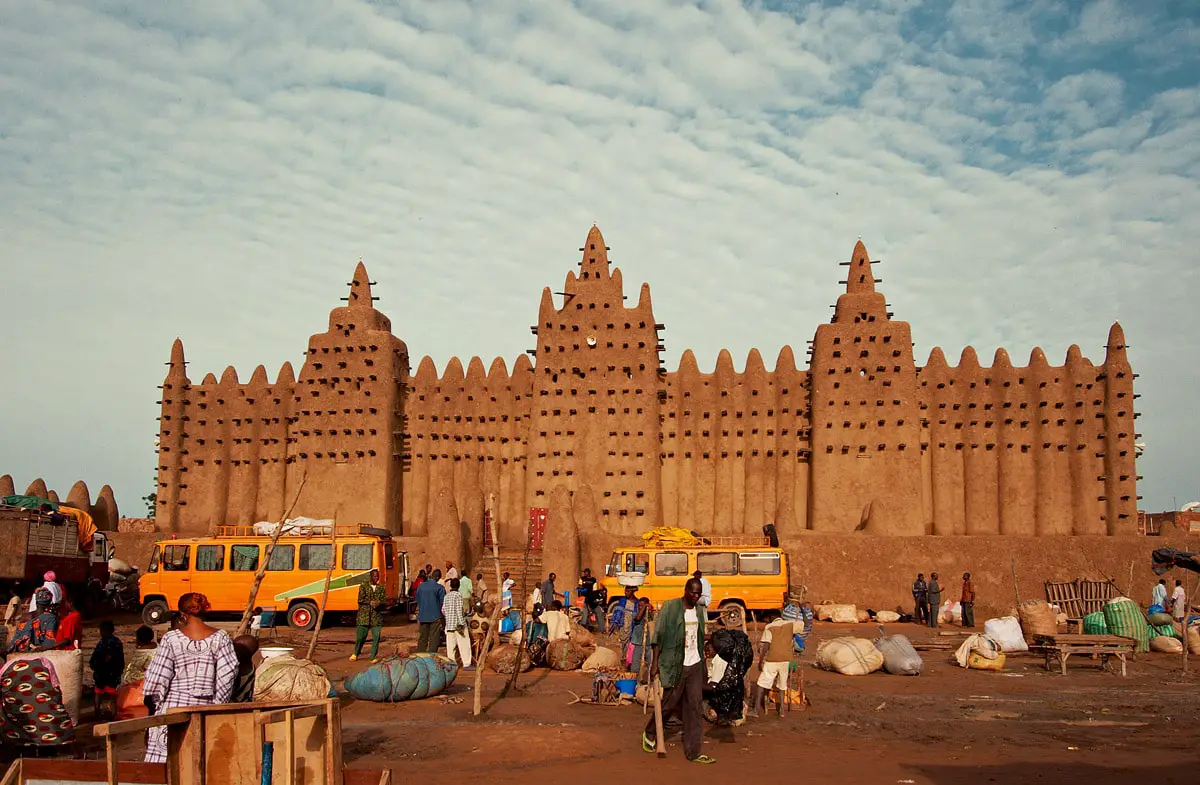
Religious architecture
Since ancient times human talents and skills have been expressed in religious architecture and arts, and traditions and rituals have evolved around pilgrimage sites. Religious buildings represent a major part of the highest achievements in architecture and crafts.
 Recommended books
Recommended books
A Carpet Ride to Khiva
A unique travel memoir about one of the world’s most enchanting but least-known countries.
A Ride to Khiva
It is 1875, the time of the ‘Great Game’, when the British and Russian Empires are vying for power in central Asia. Great Britain learns of Russia’s plans to annex India, the ‘jewel in the crown’ of the British Empire. A British officer rides for Khiva, a Russian city closed to European travelers. He is on a dangerous mission, to learn if this remote and dangerous oasis is about to be used as a springboard for the Russian invasion of India.

